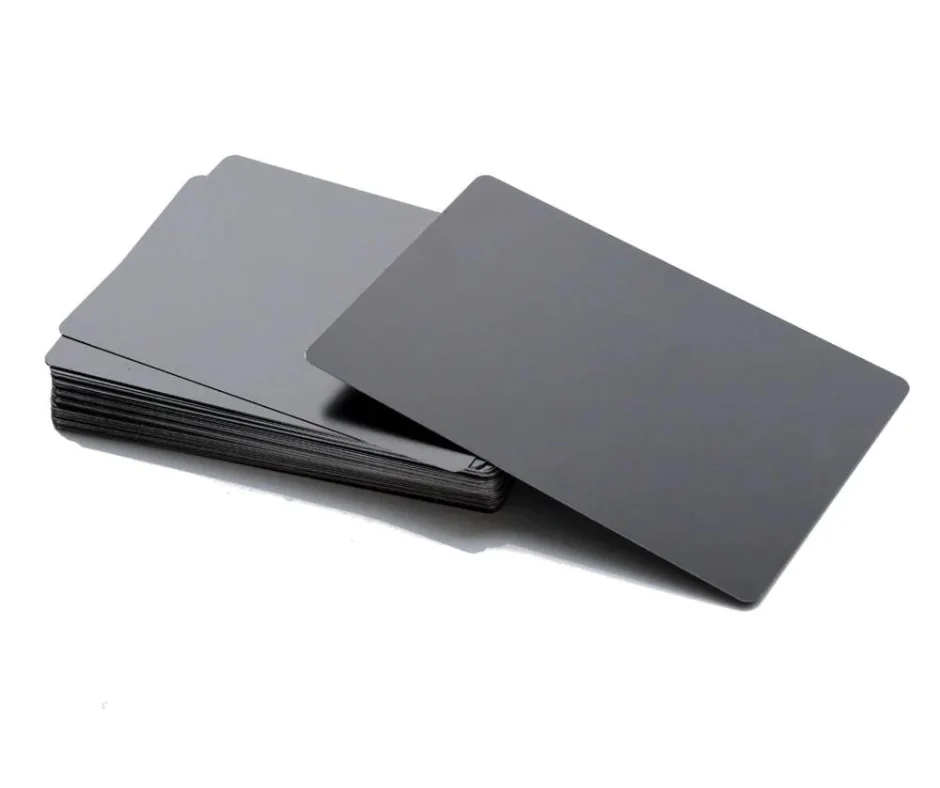Thinking about making metal cards and wondering how thick they should be? You’re not alone! Picking the right thickness isn’t just about looks—it’s about how the card feels, how long it lasts, and even how it fits in someone’s wallet. Let’s break down what you need to know.
Typical Metal Card Thickness: What’s Normal?
Most metal cards you’ll find out there fall between 0.3 mm and 1.0 mm thick. But, to get a bit more specific:
– 0.3 mm – 0.6 mm: This is the sweet spot for most cards—nice balance of strength and usability.
– 0.3 mm: Feels lightweight and slim, but might bend more easily.
– 1.0 mm: Super solid and premium, but can feel heavy or bulky.
Pro tip: Most standard metal cards are around 0.5 mm thick. This size works well for durability and ease of use. For more details, check out this resource on metal card thickness.
What Affects Your Thickness Choice?
There’s no “one size fits all” here. Think about:
– Design style: Want a bold, luxury feel? Go thicker. Minimalist and sleek? Thinner works.
– Budget: More metal means more money. Thicker cards cost more to make.
– Purpose: Cards that get handled a lot (think business cards or VIP passes) do better with extra thickness.
– User experience: Heavier cards feel fancy, but they might be awkward to carry around.
Bottom line: Consider what matters most to you—looks, feel, or price.

Standard vs. Custom Thickness: Which is Best?
You can always go with the “usual” thickness, but custom options are out there if you want something special:
– Standard thickness (about 30 mil): Good for most uses, easy to stack, and fits most wallets.
– Custom thickness: Stand out with something thicker or thinner to match your brand vibe. Just remember, thicker cards weigh more and may cost extra to mail or produce.
Does Thickness Really Change the Card?
Oh, absolutely.
– More thickness = more durable. Less likely to bend, scratch, or wear out.
– Feels premium: Thick cards make a statement. They feel expensive and sturdy in your hand.
– Too thick? Might be hard to slide into card slots or pockets.
– Too thin? Easier to damage over time.
Finding your Goldilocks zone—not too thick, not too thin—is key!
Industry Trends: What’s Popular in Different Sectors?
It’s not all the same across industries. Here’s a quick cheat sheet:
– Luxury/Corporate: Go for thicker cards (24-30 mil). They scream exclusivity.
– Tech/Events: Lighter, thinner cards (16-20 mil) are easier for quick handling.
– Banks/Finance: Middle-of-the-road thickness. They want durability but also ease of use.
Customization is on the rise, so don’t be afraid to break the mold if it suits your brand!
How to Pick the Right Thickness for Your Metal Card
Not sure where to start? Try this checklist:
- Think about your brand: Want to look high-end or modern and minimal?
- Consider how the card will be used: Daily use needs extra durability.
- Weigh the price: Thicker = pricier.
- Test it out: If you can, get some samples and see how they feel in your hand.
- Check compatibility: Make sure it fits with any printing/engraving you want.
Final thoughts:
Choosing the right metal card thickness is a balancing act. It’s about matching your brand’s style, your budget, and how the card will actually be used. Take your time, test out a few options, and you’ll find the perfect fit!
